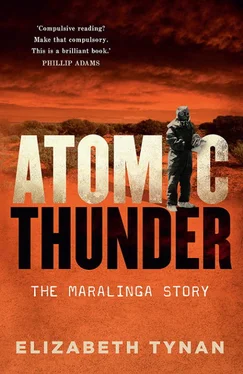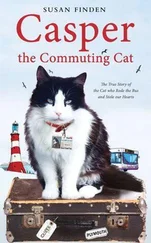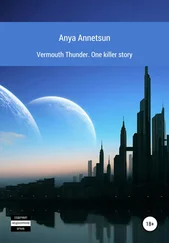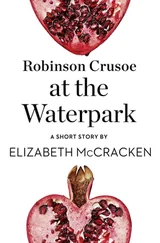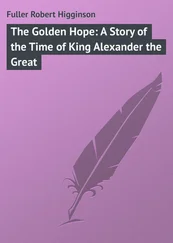Soon, as the almost unimaginable possibilities presented themselves, both Allied and Axis governments started to crack down on the free publication of this growing body of scholarly research. Some scientists, notably Szilard, believed that publication should be stopped voluntarily, and he encouraged other scientists to refrain from publication even before government-imposed secrecy took over. In the first few months of the war in Europe, as uranium fission research was taken over by government entities and as scientists recognised the gravity of these many new insights, publication ceased altogether. This alerted the Soviet Union to the fact that the science had shifted to the military, and they deployed spies to crack the secret knowledge. The spy rings were forming even before the scientists knew how far their research would take them, and they proved to be devastatingly effective once the bomb moved from theory to reality.
The science can be simply stated. An atom has a nucleus consisting of protons, which have a positive charge, and neutrons, which have no charge. Electrons, which have a negative charge, surround this nucleus. Strong forces hold the nucleus together – forces far stronger than those that hold the electrons around it. The number of protons in its nucleus determines the atomic number of each element, its position on the Periodic Table and its chemical properties. However, the nuclear properties of the atom vary depending on the number of protons and neutrons. The key to understanding how nuclear bombs work is the neutron. For heavy atoms with high atomic numbers, the fact that protons have a positive charge becomes significant, because objects with the same electrical charge repel each other. A large nucleus, such as that of uranium, is full of positively charged particles all pushing each other away. Extra neutrons are needed to stabilise it. Therefore, heavy elements tend to have more neutrons than protons in their nuclei. Some heavy elements are known as fissionable, which means their nuclei can be split. Of the fissionable elements, a small number are known as fissile, because they can readily sustain a nuclear chain reaction. Natural uranium-238, the most abundant isotope, is fissionable, but the rarer uranium-235 is fissile.
Uranium-235 was the essential isotope for the early development of the atomic bomb. If you bombard uranium with neutrons, when the beam of neutrons hits the nucleus, it reacts. As the neutron enters the uranium nucleus at great speed, it splits the nucleus apart violently into two roughly equal fragments, hence the popular phrase splitting the atom. Each fragment has approximately half the mass and half the nuclear charge of the original substance, and the process releases a staggering amount of energy. The pioneer of fission, Otto Frisch, along with his aunt Lise Meitner, calculated it as 200 million electron volts, evenly divided between the two new fragments. These fragments rapidly fly away from each other, carrying their energy with them.
Uranium-235, as a rare fissile element, has an odd number of neutrons (143), which means that for complex physical reasons it can more easily sustain a chain reaction than uranium-238. In effect, it is almost impossible to induce an explosive chain reaction in uranium-238, but relatively straightforward in uranium-235. The neutrons released by uranium-235 following fission can be catapulted into another uranium-235 nucleus, causing a cascade of fissions as atoms are split by the neutrons flung out from a preceding reaction. Each successive round of fissions is stronger than the one that came before. This is a chain reaction. As Gowing put it, ‘The reaction will spread from atom to atom through the mass of fissile material. Each fission of a uranium atom results in the release of over a million times as much energy as in the combustion of a carbon atom. A pound of uranium, therefore, if completely fissioned, would yield as much energy as several million pounds of coal’.
Critical mass refers to the fact that a certain threshold amount of fissile material is needed to sustain a chain reaction. More material is needed than will actually react, because not all neutrons that split out of the first reaction actually go on to split other nuclei. Some just depart from the reaction without further interaction. Material reaches critical mass when more neutrons are able to go off and split other nuclei than are lost in the reaction. In the early atomic weapons, just a few pounds of uranium-235 were needed to reach critical mass. Physicists began to grasp these insights into fission, critical mass and chain reaction only in the 1930s, but they came together at exactly the moment in history that they could, for better or worse, be acted upon.
When Einstein, Szilard and Wigner sent their doomsday letter to Roosevelt in August 1939, just days before the war began in Europe, they didn’t tell him they were proposing an unsubstantiated idea. Most physicists at that point did not actually believe such a weapon was possible, largely because only a tiny fraction of natural uranium is actually fissile – which meant it would take tonnes of the stuff to have enough material to start a nuclear chain reaction. The letter immediately piqued the president’s interest not least because it was signed by Einstein. In October 1939 Roosevelt ordered the creation of the Advisory Committee on Uranium, and the American atomic bomb effort got its tentative start.
By then, more important developments were afoot in the UK, unknown at first to Roosevelt and his newly created uranium committee. Physicists Otto Frisch and Rudolf Peierls concluded that the physics problems associated with achieving critical mass were not insurmountable, if the isotope uranium-235 could be separated from natural uranium-238. The physicists, both Jewish refugees (Frisch was Austrian, Peierls German), were working at the University of Birmingham in England. They deduced that uranium-235 would achieve fast critical mass with only a pound or two of the material, effectively resolving the technological stumbling block to a nuclear weapon. They wrote a memorandum outlining their findings, the famous Frisch–Peierls Memorandum. The canny Australian physicist Marcus Oliphant, usually known as Mark (later Sir Mark), working at the same university, made sure that the right people at the heart of the British Government came to know immediately what was in that brief (three-page) document. This world-changing memorandum began modestly:
The possible construction of ‘super-bombs’ based on a nuclear chain reaction in uranium has been discussed a great deal and arguments have been brought forward which seemed to exclude this possibility. We wish here to point out and discuss a possibility which seems to have been overlooked in previous discussions.
Frisch and Peierls then made a simple and eloquent case for a bomb made from a small quantity of uranium-235. The device they described would have two separate lumps of the substance that would be rammed together when detonated to instigate a chain reaction. Their words reveal a moment in science when educated insight precipitates a leap forwards in human knowledge. They had no applied research to back up what they were saying. They had their reasoning ability combined with their knowledge base. It was enough.
The scientists also speculated on what might happen if such a bomb were exploded in the real world:
Any estimates of the effects of this radiation on human beings must be rather uncertain because it is difficult to tell what will happen to the radioactive material after the explosion. Most of it will probably be blown into the air and carried away by the wind. This cloud of radioactive material will kill everybody within a strip estimated to be several miles long. If it rained the danger would be even worse because active material would be carried down to the ground and stick to it, and persons entering the contaminated area would be subjected to dangerous radiations even after days. If 1% of the active material sticks to the debris in the vicinity of the explosion and if the debris is spread over an area of, say, a square mile, any person entering this area would be in serious danger, even several days after the explosion.
Читать дальше
